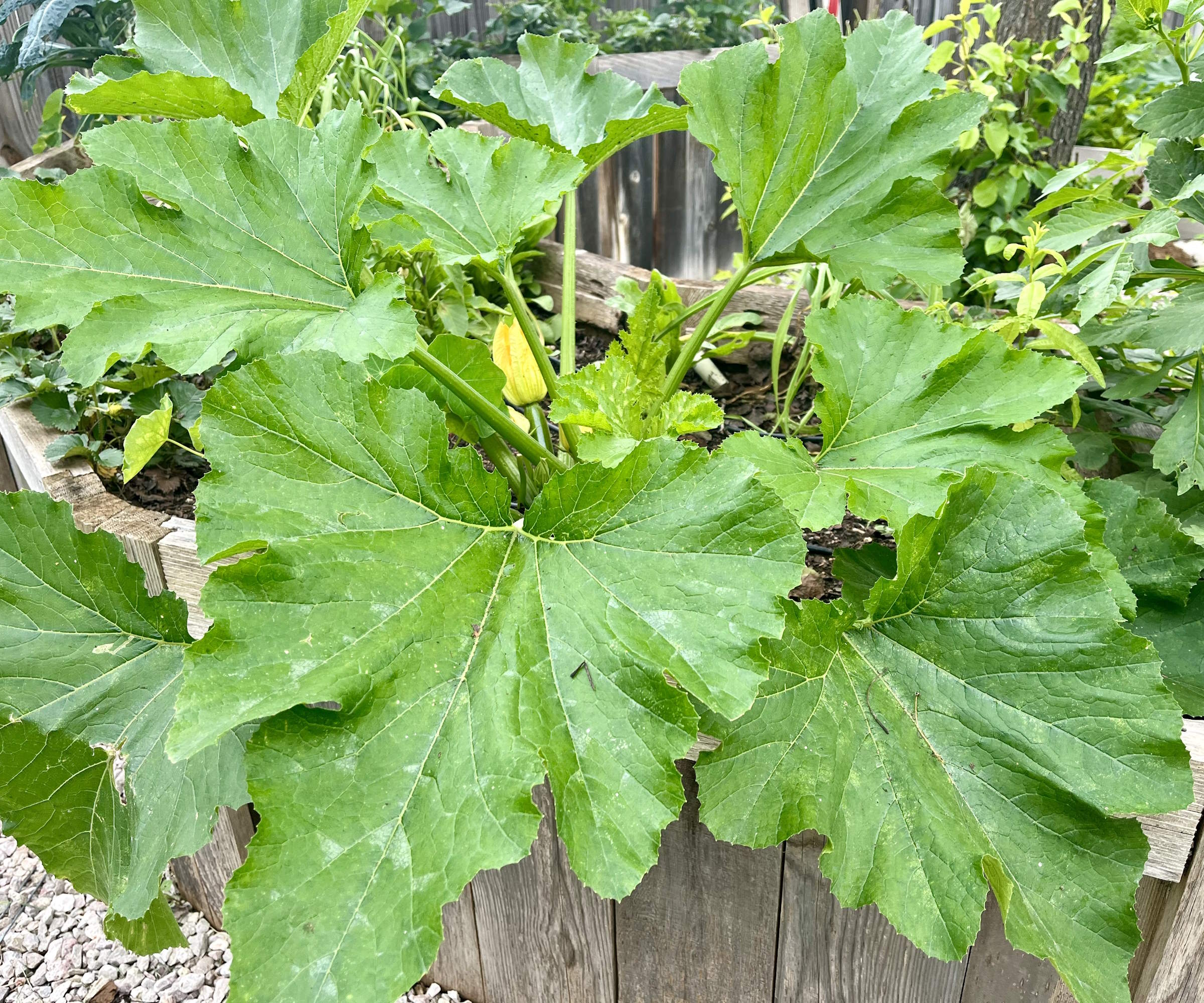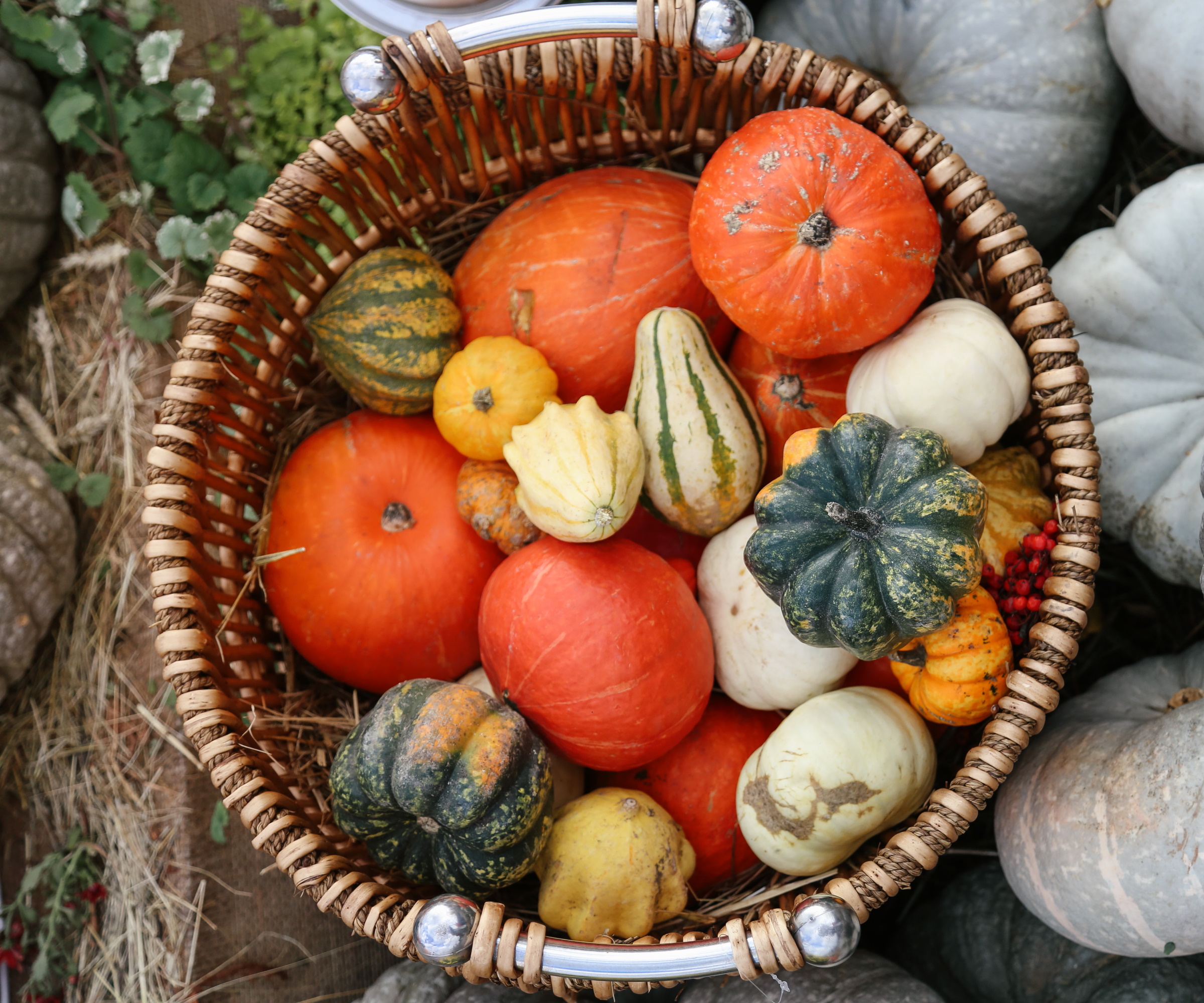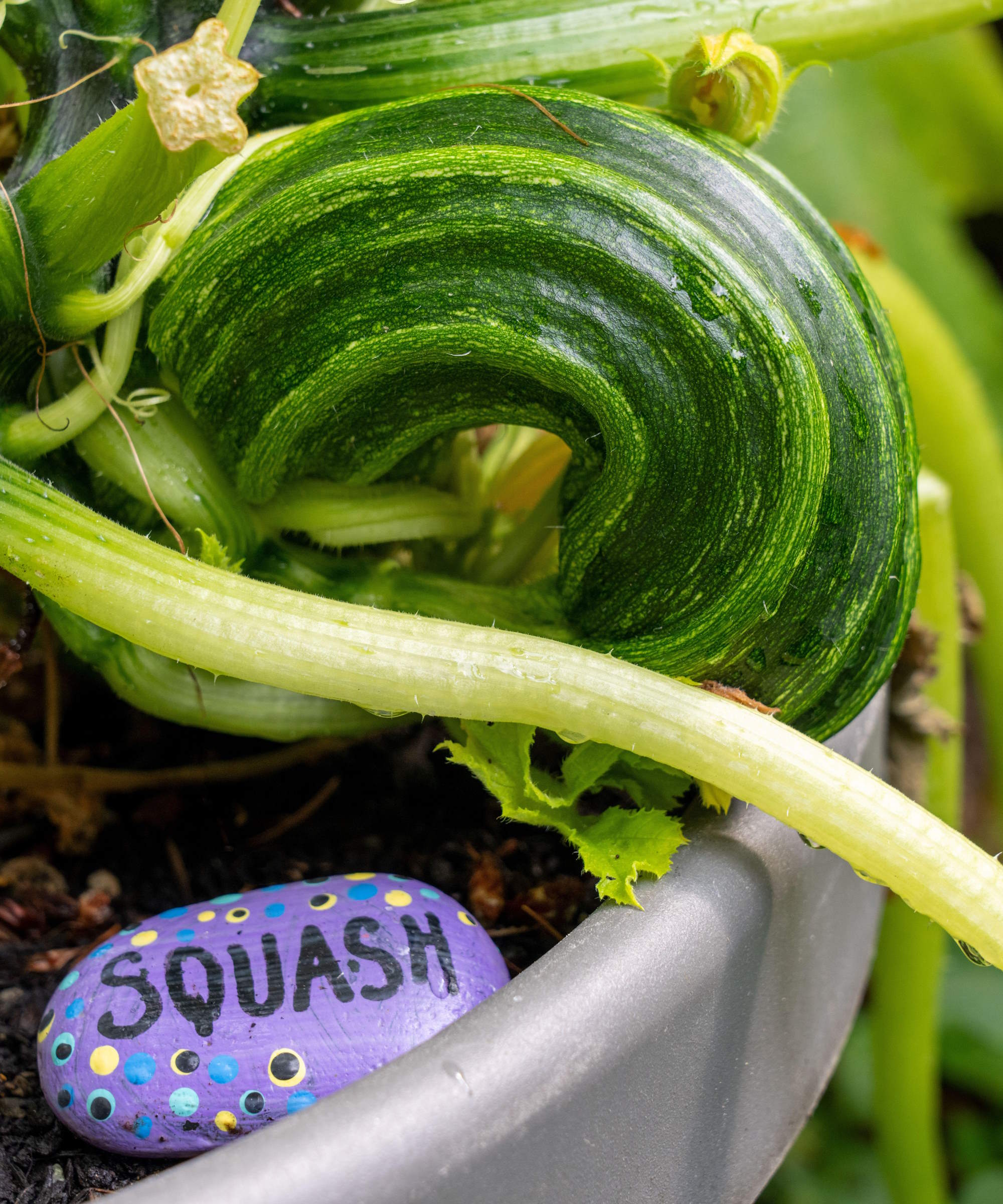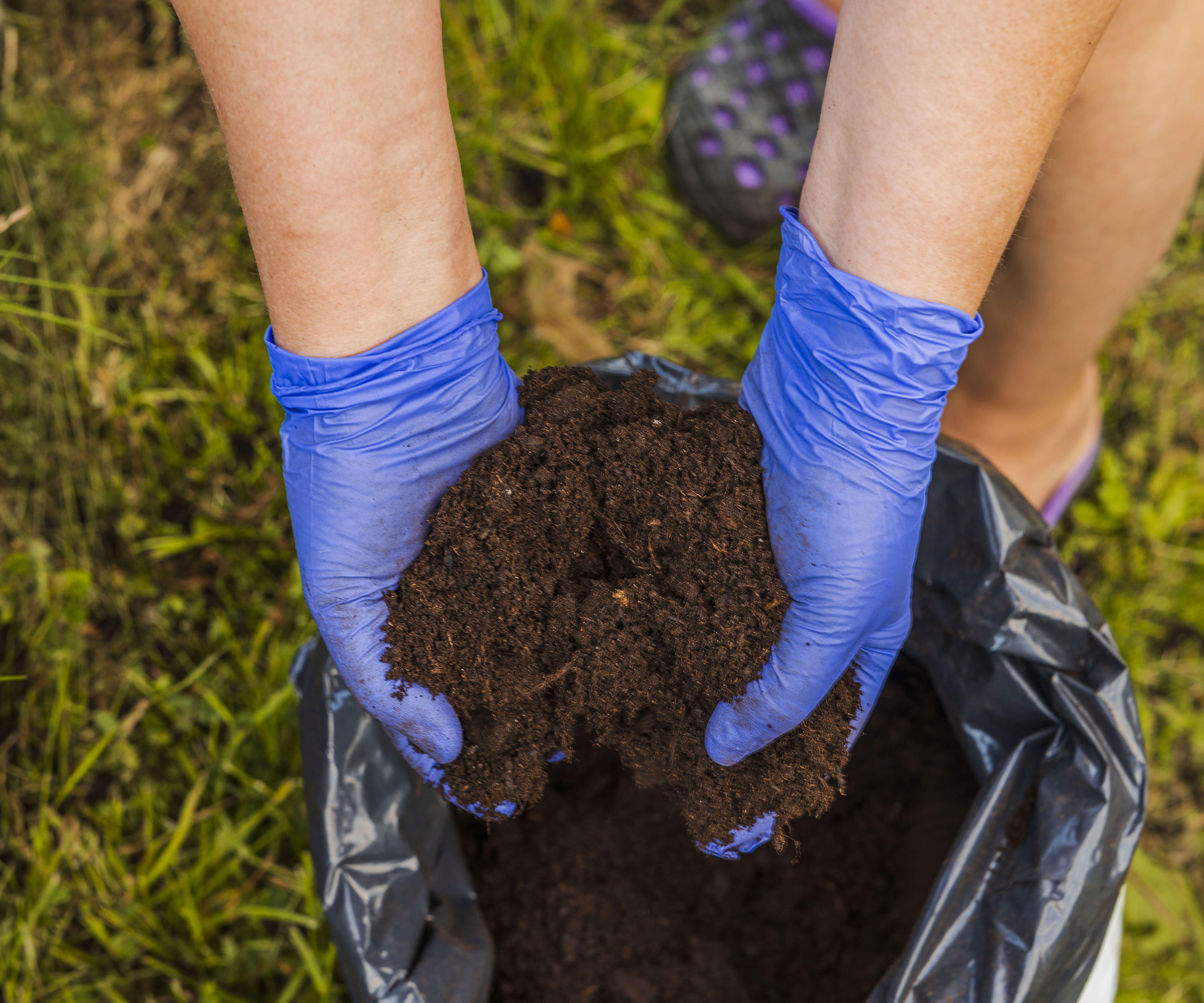
Squash are commonly thought of as large and sprawling plants to grow, however, there are several ways in which they can be suited to growing in containers. Taking advantage of these opens up possibilities to grow squash in smaller spaces, such as urban gardens on a deck, or balcony.
The options for growing squash can make life easier if you want to grow the crop in a vegetable container garden. It includes choosing the type of squash, what container to put it in, and how you want to grow it.
Get it right and you can get a fantastic squash harvest in a small vegetable garden by growing the crop in containers. But there are also some key issues to avoid that can prevent you from having that success.

How to grow squash in a pot - 6 steps to success
The difference between success and failure in growing squashes in pots could potentially come down to a few key decisions. We hear from expert vegetable growers and shine a light on six important areas to get right.
1. Pick the right type of squash

There are many different types of squash you can grow, there is a wide range of both summer squash and winter squash coming in different sizes, shapes, and colors. All of them can be grown in containers, however, by selecting ones with specific traits you can help make life easier for yourself.
One of the main reasons you may choose to grow squash in a pot is due to space, you may want to grow the crop on a deck, patio, or balcony. If so, smaller bush types will take up less space and be easier to grow in a container.
Troy Smothermon, the founder of StartOrganic in California, recommends looking for the term ‘bush’ in any name if you are short of space and picking crops to grow in pots.
He adds: ‘For winter squash, something I'd recommend is 'butterbush butternut squash'. It is great tasting and only has 3-foot-long vines, much smaller than a regular butternut squash vines that may be up to 15 feet.
‘As for summer squash, most varieties will stay in a bush shape, but some crops are smaller bushes like the ‘Bush Baby’ zucchini that is small, compact and tasty.’
Along with bush types, patty pan summer squash and round zucchini varieties are container-friendly.
Butterbush butternut squash is a great space-saving squash that produces 12-18" with deep-red-orange flesh that is rich and delicious. Plants reach 10" in height and 36" spread.
A vertical-growing variety of squash that gives you tasty, bright-yellow fruits, even in modest-sized gardens. The 4-8" fruits have a rich, buttery flavor and are bitter-free.
Scallop Yellow Bush is a bush type of squash that produces nice yields of flat, round fruit. Delicious when harvested at the 2-3 inch size when they are delicate and tender.
2. Choose a large container

There is no hiding away from the fact that squash plants need large pots to grow to full size and produce a good yield of fruits. Even the more compact bush types of squash grow an extensive network of roots.
It is important to give the plants enough to properly develop both the roots and also the plant’s top growth. The larger the container, the larger the squash plant will grow - and therefore the bigger the harvest.
So how big is big enough? Well, Nancy Awot-Traut, horticulture specialist at Burpee, recommends: ‘Squash generally need containers 20-24 inches in diameter and 12-18 inches in depth depending on the variety.
‘When in doubt, go with the biggest container you can.’
You can choose containers of varying materials, from plastic pots or planters to terracotta or glazed ceramic containers, or even a half-wine barrel. There are even options to grow squash in buckets or fabric grow bags.
Whatever pot you choose, grow just one squash plant per container. It ensures the plant has the space and nutrients to reach its full potential. You can plant small herbs or flowers for companion planting around the edges of the container.
3. Think about drainage

Drainage is vitally important when growing plants in containers and must never be overlooked. Not thinking about drainage is a major container gardening mistake that can lead to a build-up of excess moisture and, in the worst-case scenario, root rot. Squash plants do not like to sit in very soggy soil, so you do need to ensure your planter has holes in the bottom to allow water to drain away.
A second important way to ensure good-quality drainage is to use the right type of compost when you plant up containers. A soil designed for container gardening will be light, fertile, and free-draining - which is perfect for growing squash. Never use garden soil in pots as it is liable to sit far too wet and the result will be unhappy squash plants.
4. Keep on top of watering

Judging when to water plants will be important in growing squash in pots. Squash are fast-growing plants that need lots of water throughout the season. The soil wants to be kept consistently moist at all times but never waterlogged.
Plants want up to two inches of water per week and it may mean daily watering to keep the soil moist during the summer. Keeping on top of watering is imperative as a lack of moisture will be a reason why squash leaves turn yellow during the season.
Nancy Awot-Traut offers valuable tips for watering plants in containers, saying: ‘When the soil feels dry, stick your finger in it about an inch to check the moisture levels under the surface. Water deeply; there should be some water coming out the bottom. Do not let them sit in the water.’
As for how to water plants, try to water the soil and not the foliage. Soaking the leaves is a watering mistake that can increase the risk of fungal diseases, including powdery mildew. Any leaves that do show mildew symptoms should be removed from the plant promptly.
5. Don’t over-fertilize

Squash plants need lots of nutrients to grow and produce fruits, but it is easy to over-fertilize plants in pots. The temptation may be to feed squash plants more in a container than you would if the plant was growing in the kitchen garden soil. However, Troy Smothermon claims that is not the case and that the focus should be on creating a rich soil for the plants to thrive in.
‘If you start with a good blend of soil, you shouldn't need to feed the soil too much - if at all - throughout the season,’ he says. ‘That is also why a larger container may make it easier to grow throughout the season - more nutrients for the plant to take in with less input from the grower.’
A potting soil may already have some fertilizer mixed in, however, if not then add a slow-release balanced fertilizer at the time of planting. This will provide a wealth of essential nutrients over many months as the squash develops.
After that, the focus switches to giving the squash plants a fertilizer that is high in phosphorus and potassium, which aids the formation of flowers and fruit.
‘My go-to fertilizer for fruiting plants is MicroLife’s Maximum Blooms,’ recommends Crystal Jarvis, owner at Lettuce Grow Something. ‘This fertilizer is liquid, so you’ll just add the fertilizer to a watering can with water and give the base of your squash plants a good soaking with the solution.
‘I begin applying this as soon as my plants start flowering, and then I repeat every 2 to 4 weeks.’
A liquid plant fertilizer with an NPK of 3-8-3 that features 100 + minerals, vitamins, natural plant hormones, natural plant stimulators, essential sugars/amino acids/carbon and protein.
6. Grow vining types vertically

If you opt to grow vining varieties in pots, there are real advantages to growing squash in containers vertically. If you have the space and can let the squash sprawl, it will do so happily. However, growing squash vertically up a vegetable garden trellis can save valuable space and help prevent pests and diseases.
The container must be large enough to have room for the support, such as an obelisk trellis or a tomato cage, and vines will need to be regularly tied in. It may require more time and effort than letting plants sprawl, but the benefits outweigh that.
Growing vertically means the plants benefit from increased sunlight and airflow, which reduces the likelihood of disease and makes it easier to spot pests. Fruits are also lifted off the ground and away from pests, while they can grow more evenly hanging from the structure.
A tomato cage, available at Walmart, is a great option to use if you want to train squash plants to grow vertically.
FAQs
Can squash grow in buckets?
Yes, it is possible to grow squash in buckets successfully, with Troy Smothermon claiming ‘it is possible to use a container the size of a 5-gallon bucket to get a decent bounty‘. Any bucket does need holes drilled in the bottom for drainage and to be filled with good potting soil. A 5-gallon bucket will be a good size to grow one plant of a compact ‘bush’ variety of squash.
Can you plant squash in a grow bag?
Grow bags are portable and flexible container options for growing squash. They are available in 5-gallon sizes, such as these heavy-duty grow bags on Amazon, which make them suitably large enough to grow squash plants in.
If you want to discover more ideas for quick and easy crops to grow in a container garden, see our guide to the best vegetables to grow in pots. There is a long list of vegetables to discover that are ideally suited to growing in pots and many of them are easy vegetables to grow, so you can get simple harvests from your containers.







